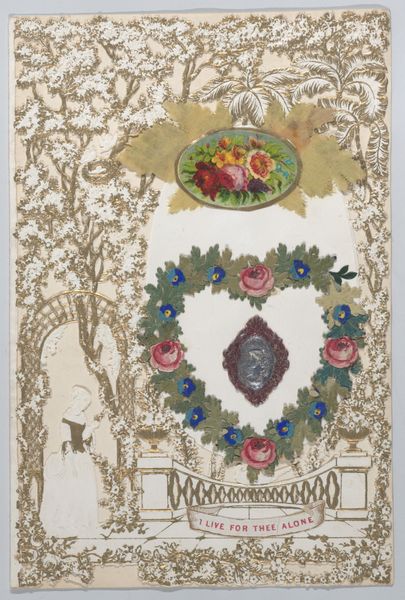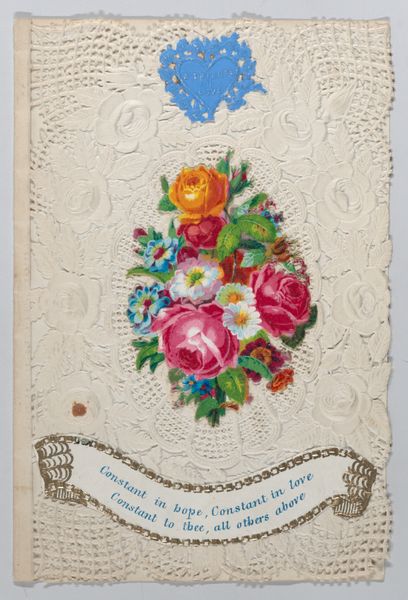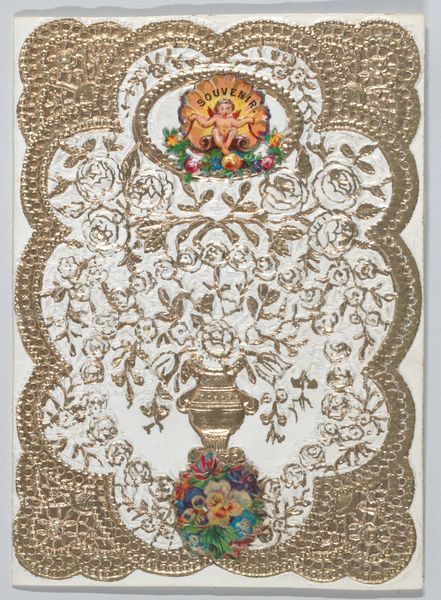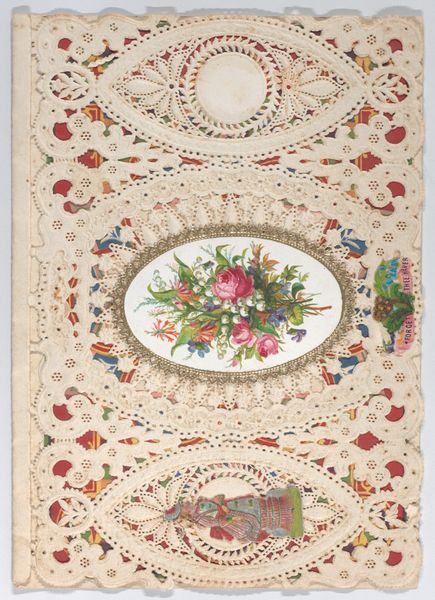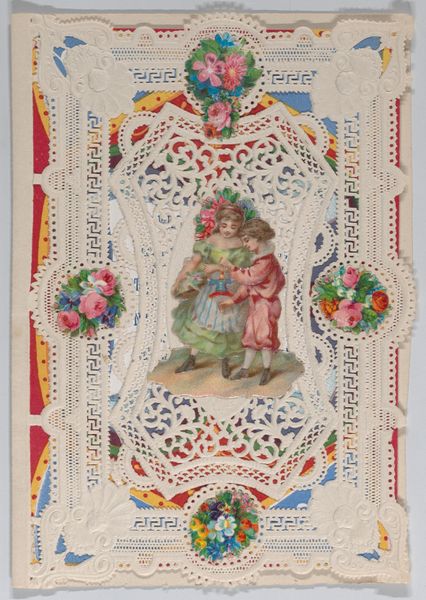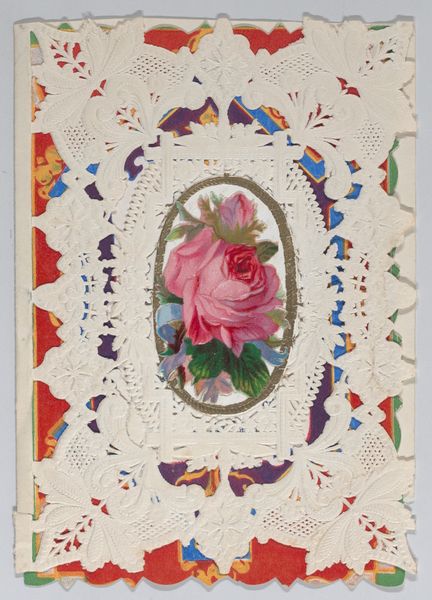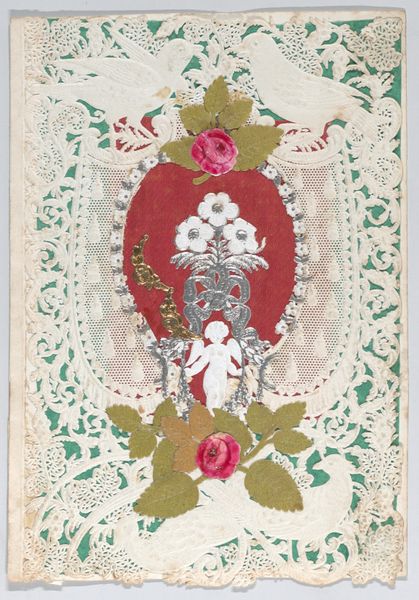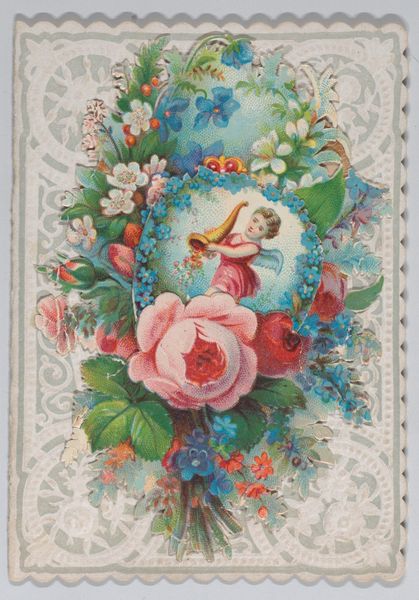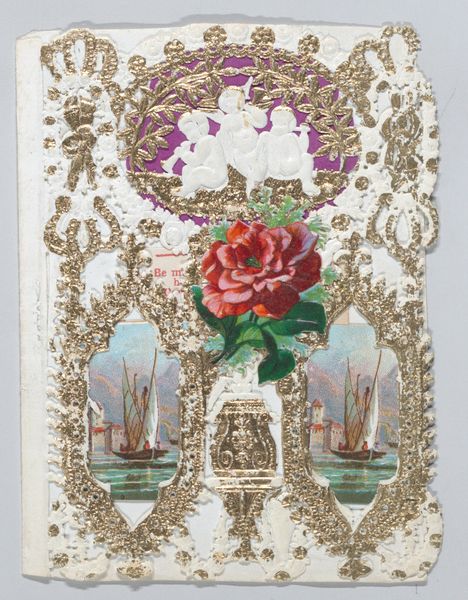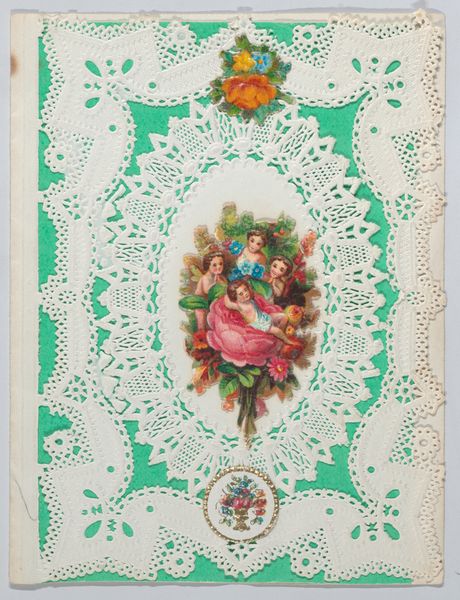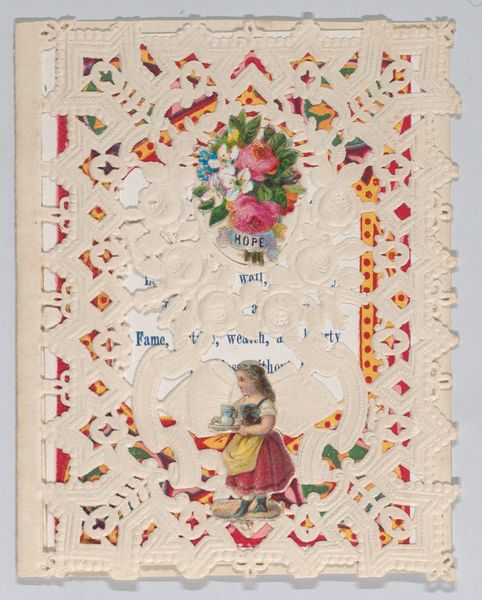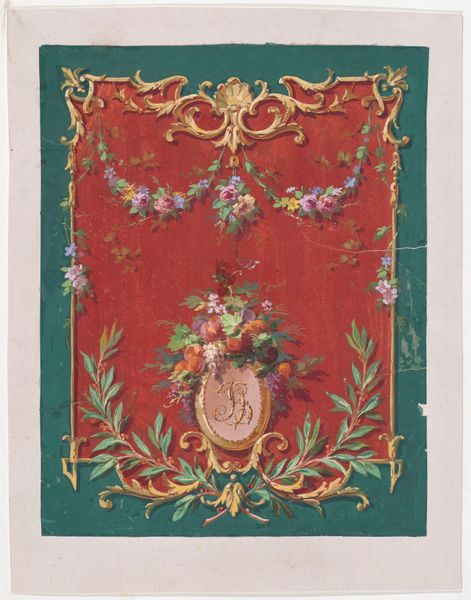
drawing, print, watercolor
#
drawing
#
fairy-painting
# print
#
watercolor
#
naive art
#
watercolour illustration
#
decorative-art
#
decorative art
#
watercolor
Dimensions: 3 15/16 in. (10 cm) width 6 1/8 in (15.6 cm) length
Copyright: Public Domain
Curator: My goodness, that is quite the creation. It practically sings of romance and longing. A little overwhelming, but lovely. Editor: It's Valentine, attributed to Esther Howland and dating from around 1847 to 1879, currently held at the Metropolitan Museum of Art. It uses watercolor and print combined with other media to explore decorative themes within the 'fairy-painting' trend of its time. It definitely explodes with ornament. All those doilies, metallic details... a veritable explosion of Victorian maximalism. Curator: Exactly! It feels so intensely personal, like peering into a meticulously crafted secret world. Like someone bottled up every flutter of affection, every unspoken desire, and then just… unleashed it onto paper. All that lace – paper lace, it looks like? – forming intricate nests for these little figures. Editor: And speaking of figures, notice the prominent positioning of women—are they dolls, illustrations, or allegorical representations? It would be intriguing to delve into what their placement and gazes suggest about idealized femininity and gender dynamics within a Valentine's context. It is a complex commentary of how women can perform and yet feel constrained by social norms in a patriarchal world. Curator: Hmm, now that you point that out...I initially just saw this innocent sweetness in them, but, I can see something else. A certain... stillness, almost as if the artist intended that each figure carries a separate feeling, from hope to regret. The rose at the top certainly suggests more than one shade of pink—romance tempered by realism. Perhaps even a bit of mischief thrown in for good measure? I find it really delightful. I'm reminded of paper dolls—so this might not just be decoration; but about a space women could curate, even direct in an expressive context where they had few spaces of power. Editor: That is such a key part of Valentine's discourse. These crafts offer invaluable access into women’s material conditions in the mid-19th century. The layered elements definitely speak volumes about Howland and how femininity was conceived back then. It serves as a rich tapestry for feminist and social interpretations. Curator: Well, this has turned from what I thought was a saccharine-sweet valentine into a complex social narrative. I’m almost overwhelmed anew, in a good way. Editor: Precisely. It reminds me that objects can be silent activists. Each artifact invites multiple perspectives, each unveiling layers of human history, revealing untold facets of identity.
Comments
No comments
Be the first to comment and join the conversation on the ultimate creative platform.
